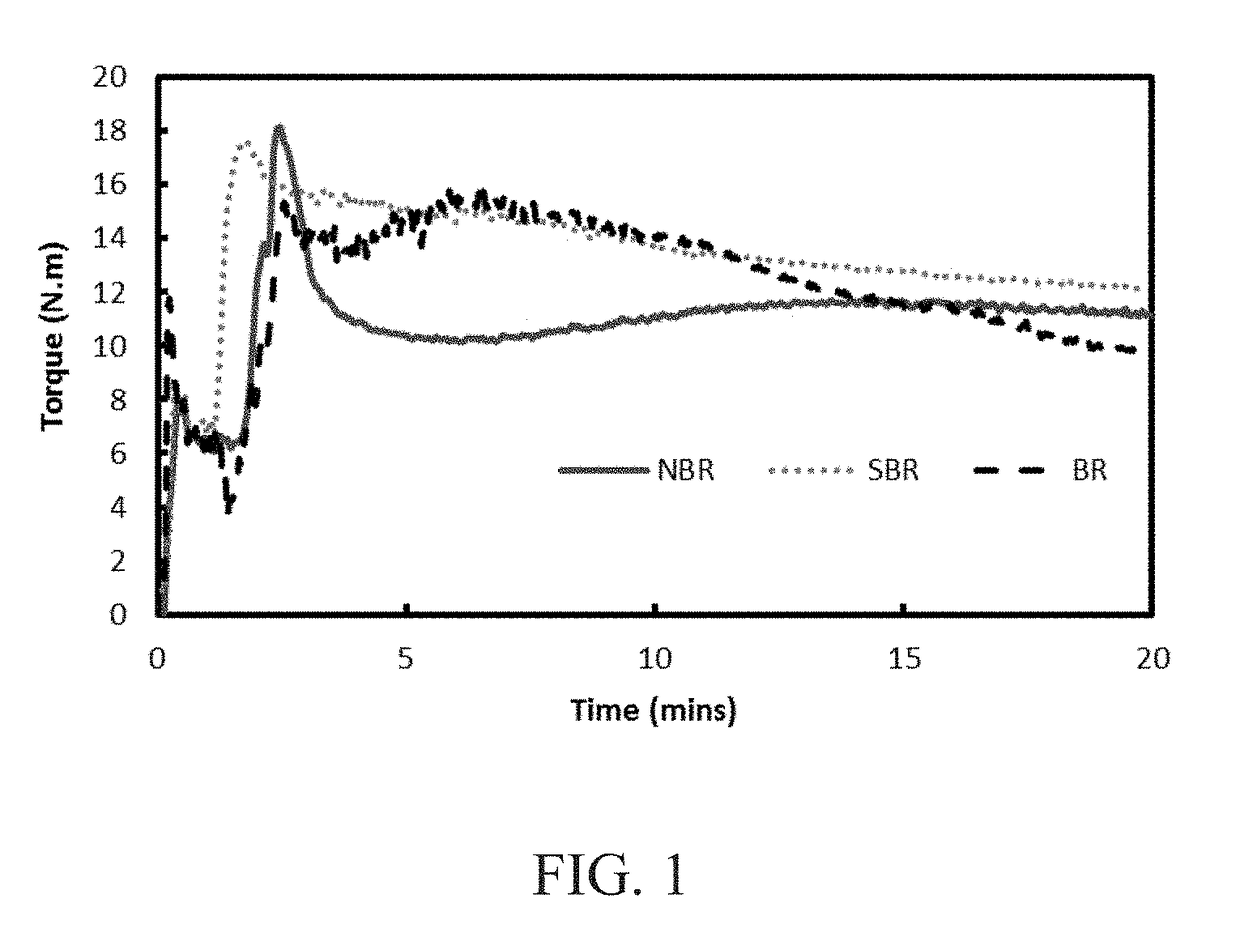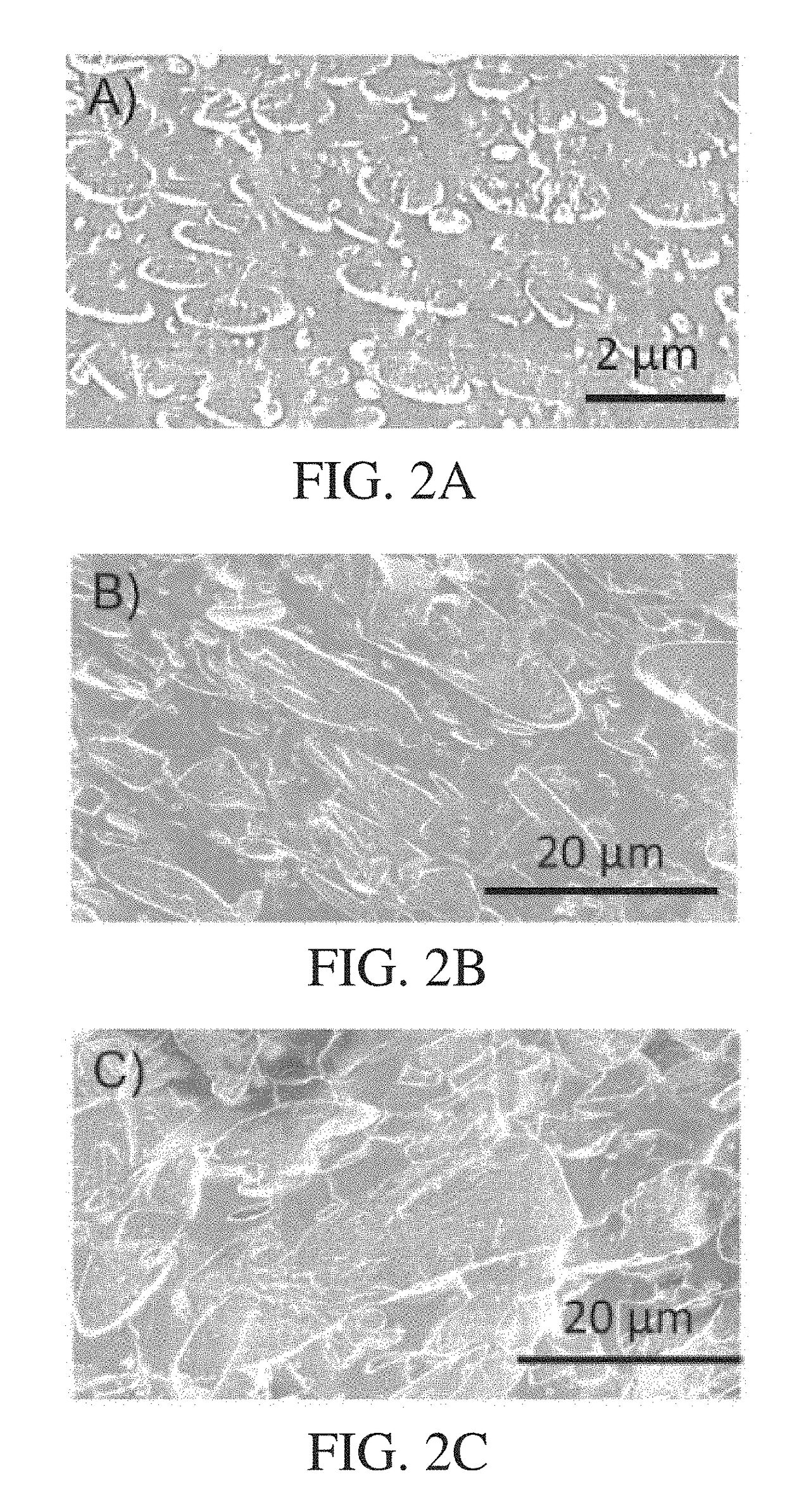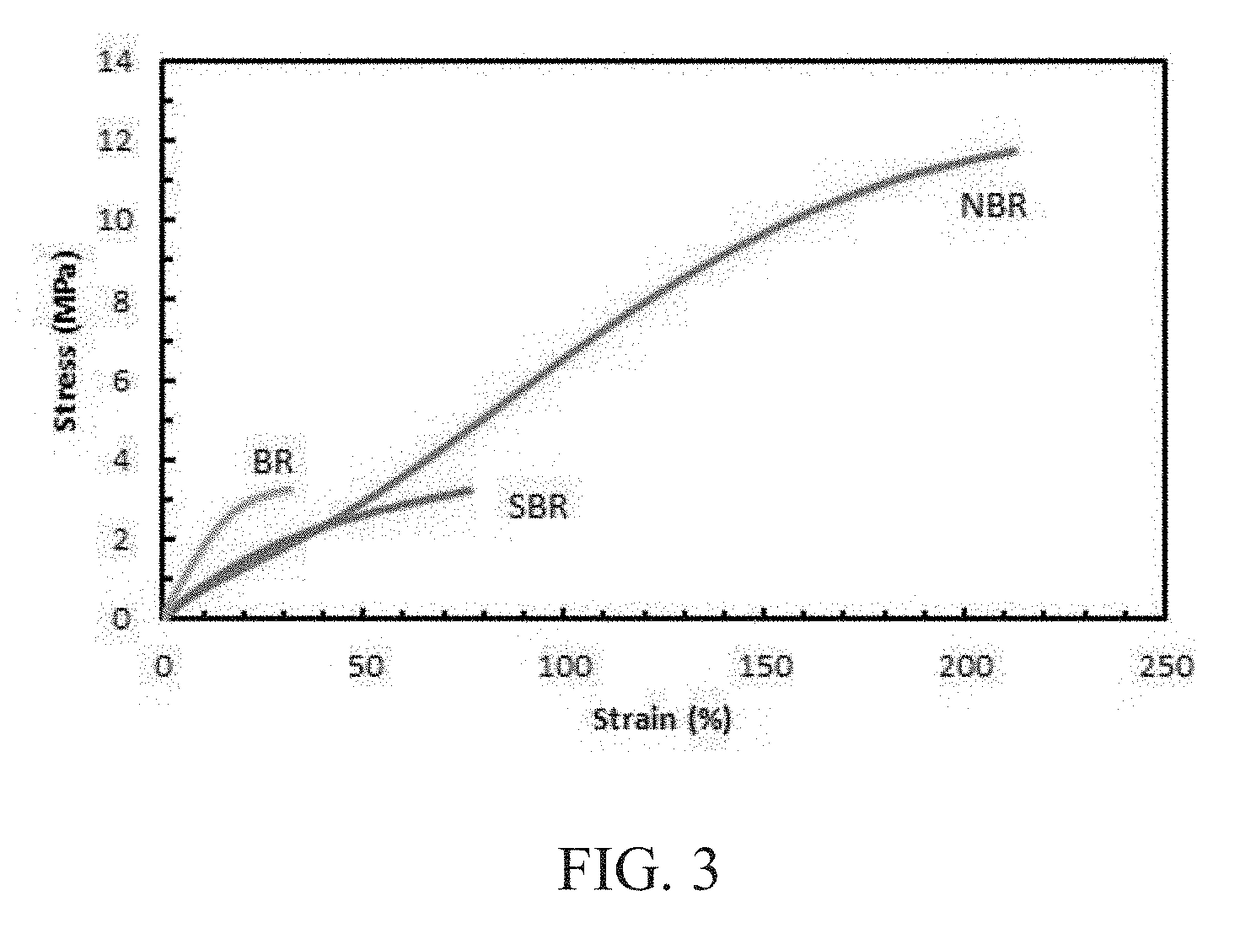High performance lignin-acrylonitrile polymer blend materials
a technology of lignin-acrylonitrile and polymer blend, which is applied in the field of polymer blend compositions, can solve the problems of insufficient demand for such products to meet large-scale utilization, and achieve the effects of reducing the carbon footprint in the environment, low cost, and improving the financial outlook of the paper and biofuel industries
- Summary
- Abstract
- Description
- Claims
- Application Information
AI Technical Summary
Benefits of technology
Problems solved by technology
Method used
Image
Examples
example 1
Effect of the Type of Rubber
Experimental
[0063]Three different types of general purpose rubber, including nitrile butadiene (NBR), styrene butadiene (SBR), and butadiene (BR), were studied for melt-phase reaction with a softwood Kraft-processed lignin (SW-A) in a Brabender internal mixer. All blends contained 12.5 g rubber, 12.5 g SWA, and 0.5 g dicumyl peroxide (DCP). The mixing was conducted at 160° C. and 90 rpm. First, the mixer was preheated at 160° C. (set point), and the rotor speed was maintained at 90 rpm. Then rubber was added to the chamber and masticated for 1 minute. Subsequently, SW-A was added, mixed, and reacted with rubber for 20 minutes. Finally, the composition was cooled down below 120° C. and then dicumyl peroxide (DCP) was added. The blend was mixed at 10 rpm for 5 minutes. At the end of the mixing, samples were recovered and stored at room temperature. A 21 g sample of the material was compressed in a hydraulic presser at 165° C. for 20 minutes at 5 metric tons...
example 2
Effect of Processing Conditions
Experimental
[0067]In the previous example, blends containing nitrile rubber (NBR) outperformed blends containing other rubbers (SBR and BR). As a result, blends containing nitrile rubber blended with SW-A were further studied by varying different aspects of the processing conditions. The following experiments studied the effect of mixing temperature, rotation speed, and the processing time. The same blend composition was used: 12.5 g NBR, 12.5 g SW-A, and 0.5 g DCP, and four different mixing conditions of NBR and SW-A were studied, as follows. The first sample was mixed at 80° C., 60 rpm, and for 30 minutes. The second sample was mixed at 160° C., 60 rpm, and for 20 minutes to compare the effect of mixing temperature with the first sample. The third sample was mixed at 160° C., 90 rpm, and for 20 minutes to compare the effect of shear rate or mixing speed with the second sample. The last sample was mixed at 160° C., 90 rpm, and for 30 minutes to compar...
example 3
Effect of SW-A Contents in NBR Blends
Experimental
[0069]The optimum processing conditions in the previous example (i.e., 160° C. and 90 rpm for 30 minutes) were selected for studying the effect of lignin content in the NBR-lignin blend. Five different compositions with varied lignin content ranging from 30 wt. % to 70 wt. % were studied. Each sample included a total of 25 g attributed to the NBR and SW-A lignin components, with different amounts of NBR and SW-A lignin. The DCP content was kept constant (0.5 g) for all mixtures. After mixing of NBR and SW-A, at 160° C., all blends were cooled down to 120° C. and mixed with DCP for 5 minutes at 10 rpm. At the end of the mixing, samples were recovered and stored at room temperature. About 21 g of sample material was compression molded at 165° C. for 20 minutes at 5 metric tons of pressure. Dumbbell-shaped specimens were punched out of compression molded sheets and used for tensile testing.
[0070]FIG. 6 shows stress-strain curves of five ...
PUM
| Property | Measurement | Unit |
|---|---|---|
| elongation | aaaaa | aaaaa |
| tensile stress | aaaaa | aaaaa |
| elongation | aaaaa | aaaaa |
Abstract
Description
Claims
Application Information
 Login to View More
Login to View More - R&D
- Intellectual Property
- Life Sciences
- Materials
- Tech Scout
- Unparalleled Data Quality
- Higher Quality Content
- 60% Fewer Hallucinations
Browse by: Latest US Patents, China's latest patents, Technical Efficacy Thesaurus, Application Domain, Technology Topic, Popular Technical Reports.
© 2025 PatSnap. All rights reserved.Legal|Privacy policy|Modern Slavery Act Transparency Statement|Sitemap|About US| Contact US: help@patsnap.com



